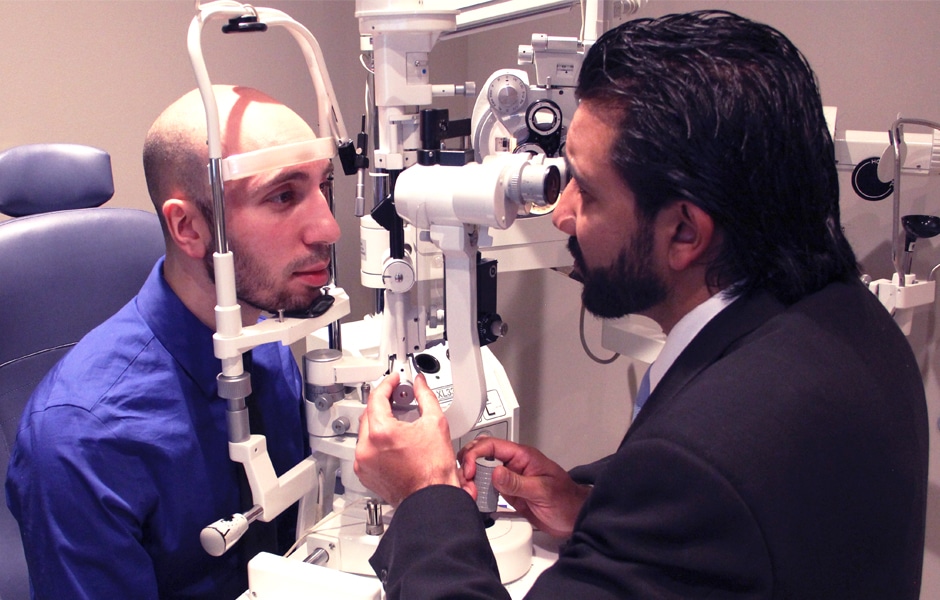Pediatric Eye Treatment at Andalusia Pediatrics: Caring for Youthful Eyes
Pediatric Eye Treatment at Andalusia Pediatrics: Caring for Youthful Eyes
Blog Article
Recognizing the Various Vision Correction Procedures Available for Clearer Sight
In the world of vision correction treatments, a plethora of options exist to attend to refractive mistakes and offer individuals with more clear sight. From the extensively recognized LASIK surgery to less invasive treatments like PRK and implantable lenses, the area of ophthalmology uses a series of techniques customized to match different demands and preferences. Each treatment includes its own collection of factors to consider, advantages, and prospective threats. Understanding the nuances of these vision adjustment approaches is critical for making notified choices about one's visual wellness. Allow's discover the ins and outs of these procedures and dropped light on the path to accomplishing enhanced vision clarity.
LASIK Surgery
LASIK surgical procedure is a typical refractive treatment made use of to deal with vision problems such as farsightedness, nearsightedness, and astigmatism. This medical method, which means Laser-Assisted sitting Keratomileusis, aims to improve the cornea to enhance just how light is concentrated on the retina, inevitably enhancing vision clarity. During the treatment, a thin flap is created on the cornea, and a laser is used to eliminate specific quantities of tissue to reshape it properly. This improving enables light to be properly focused onto the retina, fixing refractive errors.
One of the key advantages of LASIK surgical procedure is the quick improvement in vision experienced by people. Overall, LASIK surgery is a popular selection for individuals looking for a lasting service for their vision problems.
PRK Treatment

PRK is a suitable choice for people with slim corneas or those at a greater threat of eye injuries, as it does not include creating a corneal flap. The recuperation process for PRK is somewhat longer contrasted to LASIK, as the epithelium needs time to regenerate. Individuals may experience pain and blurred vision for a few days complying with the procedure.
Regardless of the longer healing time, PRK can yield exceptional outcomes in vision enhancement, making it a valuable choice for those who may not appropriate candidates for LASIK surgery. - Cardiologist Andalusia
Implantable Lenses
As opposed to PRK where the cornea is reshaped straight, implantable lenses provide an additional method for remedying vision by inserting fabricated lenses inside the eye. This procedure is particularly beneficial for individuals with high degrees of nearsightedness, farsightedness, or astigmatism who might not be ideal candidates for laser surgical procedures like LASIK or PRK.
Implantable lenses, likewise referred to as phakic intraocular lenses, job by supplementing the eye's natural lens with a fabricated one. These lenses can be put before the all-natural lens (former chamber) or behind the iris and in front of the natural lens (posterior chamber) By changing the power and positioning of these lenses, ophthalmologists can successfully remedy refractive errors and improve visual acuity.
One advantage of implantable lenses is that they are exchangeable and detachable, giving versatility for future changes. As with any type of medical treatment, there are risks entailed, such as infection or cataract development. Clients considering implantable lenses need to talk to an eye care expert to determine one of the most suitable choice based upon official site their specific requirements and eye health and wellness.
Corneal Rings

The procedure for placing corneal rings is relatively quick and minimally intrusive, usually executed as an outpatient procedure. Throughout the surgical treatment, the eye doctor makes a small cut in the cornea and inserts the rings at a specific depth. Once in position, the rings help to improve the cornea, supplying a smoother surface area for light to enter the eye, which can cause more clear vision.
Corneal rings are taken into consideration a relatively easy to fix procedure, as they can be removed or replaced if required. While they might not entirely get rid of the demand for glasses or get in touch with lenses, corneal rings can considerably enhance vision top quality and overall visual convenience for people with keratoconus or other corneal irregularities.
Refractive Lens Exchange
Following the modification of corneal irregularities with procedures like corneal rings, another vision improvement strategy that can address refractive errors is Refractive Lens Exchange (RLE) RLE is a surgery that includes replacing the eye's natural lens with a man-made intraocular lens (IOL) to fix refractive mistakes such as farsightedness, nearsightedness, and presbyopia. This procedure is specifically useful for individuals that might not appropriate candidates for treatments like LASIK or PRK due to elements such as thin article source corneas or high refractive mistakes.
Recuperation time for RLE is relatively quick, and clients can anticipate better vision quickly after the procedure. As with any type of surgical procedure, potential risks and problems exist, so a detailed examination with an eye treatment professional is necessary to figure out if RLE is the ideal vision adjustment choice.
Final Thought

In the world of vision modification procedures, a wide range of options exist to attend to refractive mistakes and give people with clearer view.LASIK surgery is an usual refractive treatment used to correct vision issues such as astigmatism, nearsightedness, and farsightedness.While additionally a typical refractive treatment, the PRK (Photorefractive Keratectomy) strategy differs from LASIK surgical treatment in its approach to dealing with vision problems.Adhering to the adjustment of corneal irregularities with procedures like corneal rings, an additional vision adjustment method that can resolve refractive mistakes is Refractive Lens Exchange (RLE) LASIK surgery, PRK procedure, implantable lenses, corneal rings, and refractive lens exchange are all choices that can attend to various vision issues.
Report this page